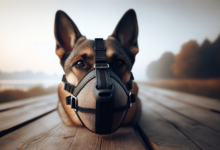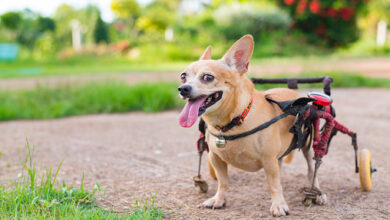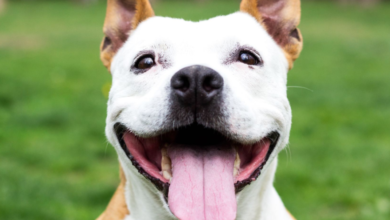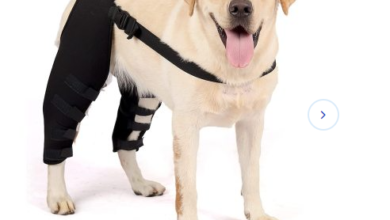
Training Your Dog to Wear a Muzzle: Tips and Techniques
Table of Contents
Introduction
When it comes to ensuring the safety of your dog and those around them, a muzzle can be an essential tool. However, getting your dog accustomed to wearing a muzzle can be a challenging process. In this comprehensive guide, we’ll explore the importance of muzzle training and provide you with tips and techniques to help your dog feel comfortable and secure while wearing a muzzle for dogs.
Why Muzzle Training is Important
Safety for Your Dog and Others
One of the primary reasons for muzzle training is to ensure the safety of your dog and those around them. In certain situations, such as visits to the vet or encounters with unfamiliar people or animals, a muzzle can prevent your dog from biting or causing harm.
Legal Requirements
In some areas, specific dog breeds or dogs with a history of aggression may be required by law to wear a muzzle in public spaces. By training your dog to wear a muzzle, you can comply with legal requirements and avoid potential fines or legal consequences.
Overcoming Stigma
Many people associate muzzles with aggressive or dangerous dogs, but this is not always the case. Muzzles can be used for various reasons, such as preventing a dog from eating something harmful or protecting an injured dog from licking a wound. By normalizing the use of muzzles through proper training, you can help overcome the stigma surrounding them.
Choosing the Right Muzzle
Types of Muzzles
There are several types of dog muzzles available, each with its own benefits and drawbacks. The most common types include:
- Basket muzzles: These muzzles allow your dog to pant, drink, and receive treats while wearing them. They are often the most comfortable option for long-term use.
- Soft muzzles: Made from fabric or neoprene, soft muzzles are lightweight and less restrictive than other types. However, they may not be as durable and can limit a dog’s ability to pant or drink.
- Short-snout muzzles: Designed for breeds with shorter snouts, such as pugs or bulldogs, these muzzles provide a more comfortable and secure fit.
Proper Fit
Ensuring a proper fit is crucial when selecting a muzzle for your dog. A muzzle that is too tight can cause discomfort and restrict breathing, while a muzzle that is too loose can be easily removed by your dog. Measure your dog’s snout and follow the manufacturer’s sizing guidelines to find the best fit.
Introducing the Muzzle
Positive Association
To help your dog develop a positive association with the muzzle, start by presenting it in a non-threatening manner. Allow your dog to sniff and investigate the muzzle while offering praise and treats. Repeat this process several times until your dog shows no apprehension towards the muzzle.
Gradual Exposure
Once your dog is comfortable with the presence of the muzzle, begin gradually exposing them to wearing it. Start by holding the muzzle up to your dog’s face for a few seconds, offering treats and praise. Gradually increase the duration of exposure, always ensuring that your dog remains calm and comfortable.
Rewards and Praise
Throughout the muzzle training process, it’s essential to use positive reinforcement. Reward your dog with treats and praise whenever they show progress or remain calm while wearing the muzzle. This will help create a positive association with the muzzle and encourage your dog to accept it more readily.
Training Sessions
Short and Frequent
When training your dog to wear a muzzle, it’s important to keep sessions short and frequent. Start with just a few seconds of muzzle wear and gradually increase the duration over time. Multiple short sessions throughout the day are more effective than one long session.
Gradual Duration Increase
As your dog becomes more comfortable wearing the muzzle, slowly increase the duration of each session. Begin with just a few seconds and work your way up to several minutes. If your dog shows signs of distress, take a step back and reduce the duration of the next session.
Incorporating Distractions
Once your dog is comfortable wearing the muzzle for extended periods, begin incorporating distractions into your training sessions. This can include going for walks, playing with toys, or interacting with other people or dogs. The goal is to help your dog learn to remain calm and focused while wearing the muzzle in various situations.
Troubleshooting Common Issues
Resistance to Muzzle
If your dog shows resistance to wearing the muzzle, it’s important to take a step back and reassess your training approach. Ensure that you are using positive reinforcement and not forcing the muzzle onto your dog. If necessary, go back to earlier stages of training and work on building a more positive association with the muzzle.
Pawing at Muzzle
Some dogs may try to paw at or remove the muzzle, especially in the early stages of training. To discourage this behaviour, redirect your dog’s attention with treats or toys whenever they leave the muzzle alone. Consistently reward calm behaviour and gradually increase the duration of muzzle wear.
Anxiety or Stress
If your dog exhibits signs of anxiety or stress while wearing the muzzle, such as painting, drooling, or trembling, it’s important to address these issues promptly. Take a break from training and consult with a professional dog trainer or behaviourist to develop a tailored approach for your dog’s specific needs.
Maintenance and Care
Regular Cleaning
To ensure your dog’s comfort and hygiene, regularly clean their muzzle. Most muzzles can be hand washed with mild soap and water, then air-dried. Follow the manufacturer’s care instructions for best results.
Inspecting for Wear and Tear
Periodically inspect your dog’s muzzle for signs of wear and tear, such as fraying straps or cracks in the material. Replace the muzzle as needed to ensure a proper fit and optimal safety.
Storing the Muzzle
When not in use, store your dog muzzle in a clean, dry place. Avoid leaving the muzzle in direct sunlight or damp areas, as this can cause the material to degrade over time.
Conclusion
Training your dog to wear a muzzle is a process that requires patience, consistency, and positive reinforcement. By following the tips and techniques outlined in this guide, you can help your dog feel comfortable and secure while wearing a muzzle for dogs. Remember to choose the right type of muzzle, ensure a proper fit, and gradually increase the duration of wear during training sessions. With dedication and understanding, you and your dog can successfully navigate the muzzle training process.








